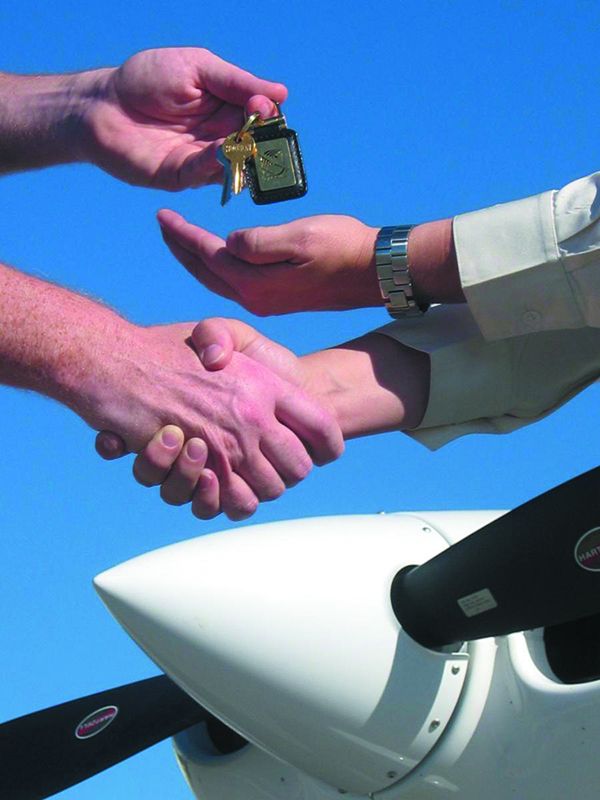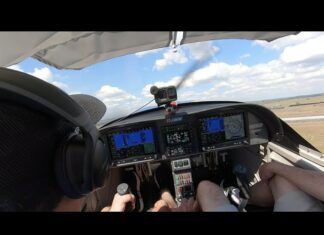It’s almost a cliché. The buyer was in a hurry to get an airplane for his flight school. He found the model he wanted for a price that fit his budget. It was 1500 miles away. It had just come out of an annual inspection, so he bought it sight unseen, with no prebuy examination. “It’s in good shape, it just had an annual.” Eighty thousand dollars and a delivery flight later, he put the airplane on the line. It started racking up hours. When the time came for the first 100-hour inspection he scheduled it to be down for three days.
At the end of the first day the technician informed him that the engine was making major metal and it appeared that the camshaft was shot—overhaul time. Plus, the list of airframe repairs needed was extensive—the estimate for the work was $20,000.
I don’t know if there will be litigation. The buyer would probably have to sue in the seller’s state. Can he prove that the deficiencies existed at the time of the sale? It’s an uphill battle.
Having bought an airplane and facing work that is a significant percentage of its value is not where you want to be, ever. Nor is having sold an airplane and getting a letter from a lawyer demanding money because you misrepresented its condition.
GET LEGAL ADVICE
In this article I’ll look at what’s involved in buying or selling an aircraft and make recommendations on protecting yourself in the process. This isn’t legal advice. However, I’ll start out by strongly recommending that, if you plan to buy or sell, you consult an aviation attorney. I suggest that you join AOPA’s (www.aopa.org) Legal Services Plan before you take any steps prior to buying or selling. It’s inexpensive, it will help you find an aviation attorney in your area and your membership entitles you to some free legal consultation.
AXIOMS FOR BUYERS
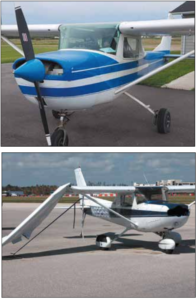
I’ll preface things with some very blunt truths about buying aircraft.
• There are a lot of airplanes in lousy condition for sale.
• Aircraft owners are human beings. Human beings are why we have cops. Some aircraft owners will lie through their teeth about the condition of aircraft they are trying to sell. A few honestly believe that their dog is an airplane in great shape and won’t be told otherwise—there are more than a few personality disorders walking around with airplanes to sell.
• “Fresh annual” is a sales technique to reel in suckers. Owners don’t do meticulous annual inspections and then sell their airplane.
• “Fresh overhaul” is another trap for suckers. Owners don’t do meticulous engine overhauls and then sell their airplane.
• Maintenance technicians are human beings—some will sign off an annual on any airplane.
• There are not great deals to be had on superb airplanes that are clear across the country. If an airplane is in great shape at a very low price, someone local would have grabbed it.
• Never, ever, ever buy an aircraft without having a prepurchase examination performed by a maintenance tech that you choose and who has never worked on the airplane.
• Never buy or sell an airplane without a written purchase agreement.
• If the airplane is over 50 years old, it almost invariably has been damaged. Start with that assumption—do your detective work to figure out what damage it has had and whether the repairs were done correctly.
• Set aside 25 percent of your purchase budget to fix stuff that is going to break on the airplane the first year and/or make upgrades. If the airplane is a twin, set aside a higher percentage—there’s more stuff to break and twins cost three times as much as singles to operate. I’m not kidding.
• Register the airplane immediately after the sale closes by overnight express. Unscrupulous sellers have been known to sell the same airplane multiple times and the FAA treats the first registration as having priority.
AXIOMS FOR SELLERS
• Trying to hide the bad stuff about the airplane you are selling can cost you a fortune in litigation—fully disclose all of the airplane’s warts up front.
• Never sell your airplane without having the buyer perform a prebuy examination with a mechanic the buyer chooses.
• Never sell your airplane without a purchase agreement.
• Do all you can to make sure that the buyer registers the aircraft, including filling out the back of the old registration and sending it in.
With the grim realities disclosed up front, next let’s walk through a purchase from each side of the counter.
BUYING TIME
You’ve narrowed the field to types with performance you desire and equipped as you want for a price you can afford.
Join the owners’ organization for the type and read all you can about it. Talk with other owners. Rule of thumb in the aviation world: Don’t ask for advice from someone trying to sell you something.
Take a minimum of 25 percent of your budget and stick it into an interest-bearing account. That’s because you’re going to run into costs that you didn’t expect—everything from sales/use tax, through stuff that breaks during the first year simply because those components don’t like you for removing the airplane from its happy home, to FAA issuance of an ugly AD.
You’ll never regret the above step.
Remember my warnings about fresh annuals and overhauls and take them to heart.
I suggest that you stay away from airplanes with fewer than 200 hours on the engine since overhaul and gravitate toward ones that are near TBO so that you can figure the cost of an overhaul into an appropriate sale price and get the engine overhauled by the shop you want, the way you want.
TAKE YOUR TIME
With all of the innovative ways to market airplanes via the internet, it might be wise to think of them as ways to rip you off. While it may be necessary to get quickly into negotiations on an airplane that’s just come onto the market, do not go through with the purchase without a full background check on the airplane for its condition and clear title. The rules for safely buying a good airplane haven’t changed with the internet—if a seller is trying to hurry you, something is probably being hidden.
If the seller is unwilling to send you copies of the logbooks, photos of the airplane and/or schedule a prebuy exam, walk away.
DEPOSIT
Does the seller want a deposit to hold the airplane? That’s fine, but keep it as small as possible and only provide one as part of a written agreement signed by both of you that states that it is buying you an exclusive option on the airplane for the agreed-upon price that is subject to (1) proof that the owner has clean title to the airplane (no liens that cannot be removed at closing), (2) has the authority to sell the airplane, (3) a satisfactory prepurchase examination and (4) a signed purchase agreement. The option agreement should make clear that you can walk away from the purchase at any time prior to signing a purchase agreement, for any reason, and get your deposit back.
ESCROW
Airplanes are expensive and purchases are often between individuals who live far apart. For that reason I strongly recommend that you use an escrow service (see the sidebar on page 13) to handle all of the money (including the deposit) and documents. It isn’t expensive (buyer and seller usually split the cost), you are far more likely to get your deposit back if something goes wrong and the service will handle filing the paperwork with the FAA.
TITLE SEARCH
Order the entire aircraft file from the FAA. It will have all of the 337s (Major Repair and Alternations), all of the Bills of Sale from previous owners as we’ll as all of the liens on the airplane and the releases of liens. The 337s will tell you about mods to the airplane, upgrades and major repairs—evidence of the damage history of the airplane. Not all owners are honest, so don’t assume that if there are no 337s for major repairs that the airplane hasn’t had major damage.
While you go through the aircraft file, also have one of the professional aircraft title/escrow companies (possibly the one that will take care of the escrow on the airplane) do a title search. It’s less than $100.
If there is a lien on the aircraft, you should require proof from the owner that it will be removed before or at closing. A lien that has not been released, even if it is 25 years old, is a deal killer. That’s hard and fast. You do not want to deal with the cost of litigation with a bank that discovered a lien in its old files and is out to collect.
PURCHASE AGREEMENT
You’ve looked at the logbooks and pictures. The title search came back clean. Somewhere in here it’s time to sign the purchase agreement with the seller. AOPA has a sample agreement that is a good starting point. It is not a fill-in-the-blanks document. Get legal assistance in filling it out.
The sale of an aircraft is controlled by state law—the FAA is only interested in recording the sale and tracking who owns the airplane, not the terms of the sale. Under most state laws, an agreement for the sale of an item above a specified dollar value may only be enforced if it is in writing.
A purchase agreement has to be customized for your situation. It should allow you to walk away, with your deposit if the prebuy exam isn’t satisfactory—and define satisfactory. If there are squawks on the prebuy, the purchase agreements spells out what happens next in terms of price adjustment or walking away from the sale.
The purchase agreement also holds the seller’s feet to the fire by representing that the logbooks are true and accurate to the best of the seller’s knowledge and that the seller has disclosed all known defects that would render the airplane unsafe or unairworthy.
DISPUTES
Should there be a dispute after the sale, normally the complaining party (plaintiff) has to bring suit in a court where the defendant lives. I recommend that the purchase agreement have language stating that any dispute will be resolved through binding commercial arbitration with the cost to be split between the parties (although the arbitrator can award all costs and attorney fees to the prevailing party). Further, the agreement should state that the arbitration can be held telephonically so that no one has to travel.
PREBUY
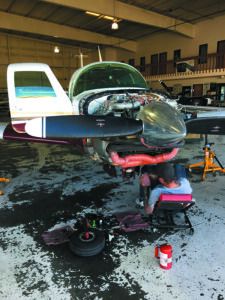
Fly an airplane before you buy it and have a maintenance technician you select—and has never worked on the airplane before—do a prebuy exam. Do not skip this step. The airplane should fly as you expect, be in rig and not do anything strange when the flaps are extended or speed is changed.
Run a weight and balance for the normal load you’re going to carry. Will this particular airplane handle it?
The prebuy is not an inspection. Inspection has meaning in the FAA world. It should not result in a logbook entry. The technician is simply opening up the airplane to look at things, not disassembling it.
We are aware of one professional maintenance management organization that will coordinate and oversee prebuys, Savvy Aviation (www.savvyaviation.com). We think this can simplify the life of a prospective owner. Full disclosure: I have been a customer of Savvy—including management of an engine overhaul—and was quite happy with it.
A prebuy generally starts out with a logbook exam for AD compliance. For reasons I’ve never understood, logbooks don’t have page numbers. It’s up to you to look and see if there’s evidence that pages have been razored out.
Then it’s to the airplane and looking, initially, for deal killers and then more minutely for squawks that need to be repaired. It should include an oil sample that is overnighted for analysis (reputable oil analysis companies will give you the results within hours of receipt), borescope exam of the cylinders and compression check.
If you hit a deal killer, stop the exam, tell the seller why and close up the airplane. You are obligated to close up the airplane so that the seller can fly it away. If your tech feels that it is unairworthy, tell the owner; however, the tech cannot ground the airplane. S/he did not do an inspection so is not returning the airplane to service.
POST PREBUY
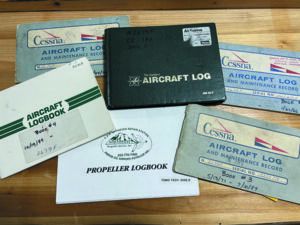
Once the exam is done, consult with the tech. Go through the squawks and decide if you are willing to move forward with the purchase—being guided by the terms of the purchase agreement.
If all is well, the next step is to close the deal. If you have set up an escrow arrangement, the signed sale documents are in the hands of the escrow agent who files them.
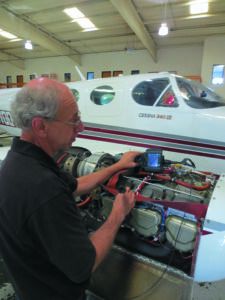
If you, the buyer, elect to pay the seller by check (no escrow involved), the check should be made out to the seller(s) and any lien holders.
Once the seller has the signed Bill of Sale, the sale is complete and you, the buyer, get to start your life with your new bird and wonder what component will break first.
SELLER CONCERNS
As a seller, you want the whole process to go smoothly and only hear from the buyer afterward when she sends you lovely photos of trips being made with the airplane. What should you do to help make that happen? Start by evaluating the condition of the airplane as objectively as possible.
You’ve been putting up with its quirks all these years, but a prospective buyer might just be concerned that the weight of the INOP stickers on the panel has loaded the airplane out of the forward CG limit. In a nutshell, if something is installed in your airplane it has to work. If you can afford it, fix it or be prepared to take the cost of repairs off of the sales price.
In addition, disclose it. Disclose everything wrong with the airplane early when dealing with a prospective buyer. Do it in writing. Disclose any information you have on any damage history.
IS IT AIRWORTHY?
If the buyer asks if the airplane is airworthy, your answer is “Ask you mechanic after s/he does the prebuy.” “Airworthy” has a distinct legal meaning—and it’s not for you to say whether it is or not unless you are about to be pilot in command of a flight.
Do a fresh title search to make sure that nobody has recorded a lien against the airplane. If there is one, you’ll need to do whatever is necessary to get it released. An escrow company can help.
Make electronic copies of at least the last five years of the logbooks; prospective buyers will want to see them. Plan on providing all of the logs at the prebuy.
If the logbooks are incomplete, disclose it. Nevertheless, you must have adequate logbooks to at least show compliance with all ADs or there’s no way for a mechanic and pilot to determine if the airplane is airworthy.
Logbooks are valuable—their loss cuts from 10 to 20 percent off the value of the airplane. Treat them as you would that much cash. Keep them locked up. If possible, make an electronic copy.
Insist that the prospective buyer have a prebuy examination performed by a shop the buyer selects. Do not even suggest the name of a shop or tech—that could lead to a claim that you somehow recommended someone who would cover up problems with the airplane.
Insist on a purchase agreement signed before the prebuy that sets out the price agreed to before the prebuy (and how it may be modified) and that outlines what is done should various contingences occur during the purchase process.
WARRANTIES
The purchase agreement should include language that clearly states that the aircraft is sold “as is” and that you make no warranties as to its condition—and that the buyer is responsible for determining its condition and the safe operation. The only warranty you should make is that you will deliver clear title to the aircraft.
I recommend that you require that the closing be handled by an escrow service—see the sidebar on the next page. By closing with a an escrow service you are protected against check scams.
We regularly hear horror stories of aircraft sales that go wrong—often, after a buyer sends a hefty deposit to the seller, something subsequently goes amiss and the seller refuses to return the deposit to the buyer. Another example is when the sale goes through, the buyer writes a check to the seller who says that he’ll pay off the loan on the airplane. The seller doesn’t pay off the loan and the bank repossesses the airplane from the buyer who thought he owned it free and clear.
Another that got our attention was the buyer who didn’t bother to register the airplane after the sale and started using it for criminal activity. The authorities spent a lot of time with the seller before he was able to prove that he had sold the airplane and no longer had any control of it before the crimes took place.
Companies specializing in providing escrow services for aircraft sales transactions have been around since the Wrights. They are the lubrication that makes the gears of an aircraft sale mesh quietly. We don’t know when we last heard of a turbine aircraft sale transaction not closing through an escrow service. Yet, for single-engine piston aircraft changing hands for under $100,000, using an escrow service isn’t terribly common. With the value of aircraft continuing to climb, we are of the firm opinion that unless you’re willing to walk away from the loss of a substantial percentage of the sale price due to a sale going bad, you should at least talk with an escrow service to see what it can do for you.
Escrow companies are bonded and insured, and our research indicates that they stay up to date with security protocols for electronic document and fund transfers. After all, their reputation and integrity is their stock in trade.
At the most basic level, an escrow service will perform a title search to see if there are any outstanding liens or title issues—something absolutely necessary for any aircraft purchase. Most will also search the NTSB database for any reported accidents involving the aircraft.
An escrow service also has title-clearing experts who can go through what can be a dauntingly complex process of contacting parties holding liens on an aircraft and doing what is necessary to get them released.
Finally, the most important job of an escrow service is to work with a buyer and seller under terms agreeable to the parties to facilitate closing a sale. Prior to the closing, the service receives all of the signed paperwork to be filed with the FAA (including lien releases) as we’ll as the purchase moneys and directions as to whom is to be paid at closing.
At closing, the parties direct the escrow service to proceed with the closing per the agreed-upon terms and purchase agreement. The service wire transfers the moneys as directed, files the FAA paperwork and provides confirmation to the parties.
If something goes wrong and the sale does not close, the escrow service follows the instructions it was provided and returns the moneys and documents so the parties may go their separate ways, reducing the risk that litigation will ensue.
The parties to the sale generally split the cost of the escrow service. In our opinion, it’s money we’ll spent.
THE CLOSING
The Bill of Sale—FAA Form 8050-2, which can be downloaded from the FAA’s website (www.faa.gov)—is signed during closing (or is signed and being held by the escrow service). It must be filled out in duplicate—two originals. The seller should keep a photocopy because both originals go to the buyer. The buyer files one, along with the registration, with the FAA. That should be done absolutely immediately after the closing.
It is very important that the name(s) of the seller(s) be written exactly as they appear on the current registration or the FAA will bounce the documents right back. No “Dave” for “David.”
Once the Bill of Sale is signed (two originals) the transfer of ownership has taken place—see the sidebar above for closing through escrow.
The current registration certificate is removed from the airplane. It is no longer valid because ownership of the airplane has changed under FAR Part 47.41. The seller completes the sale information on the back side and sends it to the FAA.
Remove any FCC radio license with the seller’s name on it.
The seller gives all of the logbooks and other items/equipment stated in the purchase agreement to the buyer.
If an LLC is buying the aircraft, the FAA wants documentation to show that the members are U.S. citizens. Details are on the FAA website. Suffice to say that it’s generally less hassle if the buyer is a corporation than if it’s an LLC.
The buyer fills out the Application for Registration, FAA Form 8050-1, and makes a photocopy of it. The original goes to the FAA with the Bill of Sale and the photocopy goes into the airplane until the FAA sends the new Certificate of Registration.
The parties advise their insurance companies of the sale and wish each other a good life.
CONCLUSION
There have been hundreds of thousands of successful aircraft sales transactions over the last 100 years. The paperwork required to satisfy the FAA is minimal. Yet sales have fallen through due to everything from bad communication through ignorance and naivete to criminal activity. To protect yourself and help make sure a sale goes smoothly, we recommend consulting with an aviation lawyer, taking your time, putting together a purchase agreement with the other party, having a prebuy exam performed and having a neutral third party—an escrow agent—handle the money and file the FAA documents.

